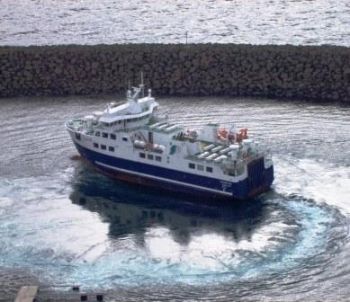International Private Maritime Law
 (Photo: Arctic Portal)Decreasing ice cap in the Arctic waters opens new opportunities for the shipping traffic, development of hub - ports infrastructure to better service the large world corporations. To become successful in the Arctic shipping operations, private ship owners must often interact with various international actors. The transport of people and trade products for business and profit is currently regulated by international private maritime law.
(Photo: Arctic Portal)Decreasing ice cap in the Arctic waters opens new opportunities for the shipping traffic, development of hub - ports infrastructure to better service the large world corporations. To become successful in the Arctic shipping operations, private ship owners must often interact with various international actors. The transport of people and trade products for business and profit is currently regulated by international private maritime law.
International private maritime framework consists of private or civil law to regulate the contracts of national origin. However, because of the constant movement of vessels between different countries, those contracts must be subjected to the jurisdiction of international community. The need to harmonize relevant national regulations with regards to marine traffic created international private law conventions that establish uniform contractual regimes.
There are several matters in national regulations that are highly influenced by international standards. The carriage of goods and passengers by sea is fundamentally regulated by bilateral, private agreements between two parties; however the international law of the sea may influence the carriage contract in the way of public standards for human safety and environmental protection. Thus, SOLAS and MARPOL regulations might be written or read into those contracts as a multitude of specific clauses.
Increasing interest in Arctic tourism, created the need to regulate the commercial carriage of passengers by cruise ships. The safety of passengers travelling into the Arctic waters is regulated internationally and falls under SOLAS rules. In 1976 the Athens Convention Relating to the Carriage of Passengers and their Luggage by Sea, came into force, adding important laws to SOLAS. It mainly states that the carrier takes the responsibility for any personal injuries of passengers or any damage or loss of their belongings. However, the Athens Convention does not provide with the criteria of negligence.
The lack of international regulation with regards to marine insurance leaves the space for national legislations to be applicable. The insurance of passengers travelling into the Arctic waters is mostly covered by local practices and markets.
Liability and compensation for ship - source pollution damage is mainly governed by the international regime of International Maritime Organization, however is the pollution incident occurs from the oil tanker, responsibility for the compensation is available from national governments that hold the authority over the cleanup operations or preventive measures. The ship owner is responsible for the damage only up to the certain extend, which is usually covered by the marine insurance.
The Bunkers Convention which entered into force in 2008 and the Civil Liability Convention from 1992, regulate the damages caused by oil spills from tankers and bunker oil spills from non - tankers. Unlike the 1992 CLC for oil tankers which involves private individuals in compensation of the damages, the Bunkers Convention does not provide for a separate free standing limitation found from the ship owners.
Efforts have been taken to establish international private legal framework for marine shipping operations in compliance with international public standards. The enforcement of new international agreements, treaties and conventions, requires from national legal systems an acceptance which is expressed by signing, becoming a party to a treaty. States are given a freedom of implementing treaties into their legal systems, however once an international agreement is signed it becomes legally binding under international jurisdiction.








